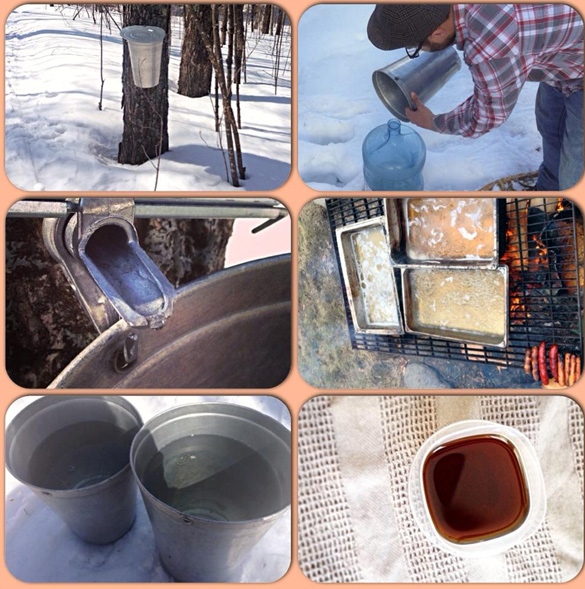Land is from where the knowledge comes

By Rick Garrick
FORT WILLIAM – A group of Fort William First Nation youth recently helped reclaim the sugar bush environment on Mt. McKay, a well-known landmark in the Robinson Superior community.
“It was a wonderful experience — the first time the bush had been tapped in over 25 years,” says Jacob McKay, a 27-year-old University of Toronto Aboriginal studies graduate and youth, culture and recreation program assistant at Fort William. “Being out on the land was something new for me, because I was just coming home. I moved back here in January.”
The group of youth, including Ryan Saarinen, Beau Boucher, Olivia Pelletier, Daanis Pelletier, Dalton Demerah and Brett MacLaurin, worked with McKay, project organizer Damien Lee, Helen Pelletier and Cher Chapman to clean up the sugar bush environment and tap about 15 of the thousands of sugar maple trees on Mt. McKay this past spring.
“We had environment experts from Lakehead University come and they explained the uniqueness of our sugar bush,” McKay says. “It’s the most northern location for a sugar bush that they’ve known and that they’ve located so far.”
Although the experts discovered the Mt. McKay sugar maples were smaller in diameter than sugar maples of a similar age further to the south, McKay says the experts found the sugar bush to be healthy.
“They mature earlier and that is in part due to the environment and also to the location that they are at, being on top of the mountain,” McKay says. “It’s really healthy and the tapping of the trees isn’t going to affect the health whatsoever.”
The group used a boiling recipe that Lee had learned in southern Ontario.
“It came out a little bit runny at first,” McKay says. “The second boil we cooked until about 10 minutes after we were supposed to take it out and that was the thickest and that was the best, in my opinion. The third time we just found a (halfway point) and cooked it for about five minutes, and that produced the most syrup and it really thick as well.”
McKay says the outdoor cooking over an open fire gave the syrup a distinctive flavour.
“There was that smoky taste to it,” McKay says. “It was really good.”
The group shared the first bottles of maple syrup with Elders in the community.
“We had just over 20 litres of syrup, so we made sure all the Elders in the community got a taste,” McKay says. “Right away there was such a positive feedback — with just a taste and a smell, they were being brought back to 25 to 35 to 50 years ago when they were in the bush themselves or their relatives or their parents or their grandparents were in the bush doing the same thing. That made it for me; that was a rewarding experience just to see the look on their faces — they were so happy.”
McKay enjoyed working on the land to reclaim the sugar bush and produce the syrup. During their harvest, the group discovered a number of remnants of past maple syrup harvests, including an evaporator, tubing and the old foundation of a building.
“Personally, it was amazing,” McKay says. “To me, land is pedagogy – land is where experience, observation and reality, inquiry and knowledge all come from. It was a raw experience being there and how you experience it is going to be different from how everyone else experiences it.”



